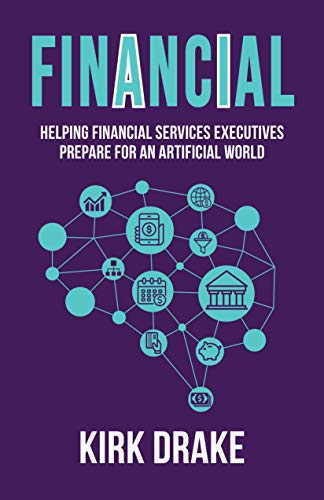This is an excerpt from FinAncIal: Helping Financial Executives Prepare for an Artificial World. Grab your copy here!
This particular case study was cut for space from the book. However, the book features more than a dozen explorations of AI-based fintechs. Stay tuned to the CU 2.0 blog while we feature more excerpts from our financial guide to AI!
One of the great things about humans is that they’re able to learn from the mistakes of others. For example, if I see someone get kicked after they slap a mule’s hindquarters, I’ll know not to slap the hindquarters of a mule.
It’s that easy.
However, learning from the mistakes of others—although it may reduce risk—can have some adverse consequences in the financial world:
After the subprime mortgage crisis and resultant financial recession from 2007 to 2010, younger generations saw how credit negatively impacted them and their parents. Additionally, the recession affected Millennials’ immediate income, spending, and long-term earning potential.
Millennials and Generation Z are accordingly less likely to apply for and use credit.
Unfortunately, being risk-averse—and credit-averse—means that these younger generations are less able to build good credit. And, without good credit, younger generations effectively close gateways to class mobility and opportunity.
Grain Reopens Gateways
Grain Technology, Inc., or simply Grain, helps risk-averse individuals build strong credit profiles without using credit cards.
By monitoring a user’s financial data, Grain builds and maintains a custom credit portfolio. They calculate a user’s income, debt-to-income ratio, credit utilization, and more. From there, they assign a credit limit, utilization recommendations, and repayment strategies for each user.
The whole system works without a credit card. Instead, the credit is assigned to them through Grain’s app, which is linked with their bank’s or credit union’s accounts.
Users can access Grain’s line of credit by making a credit withdrawal from their Grain account. Money from Grain’s credit line is transferred to the user’s checking account, and the user can withdraw or debit their credit as they need.
Their system provides many of the benefits of using a credit card, but it removes a lot of the risk inherent to credit utilization. In an effort to simplify things, Grain also addresses the headaches associated with credit cards, debts, fees, and so on.
What Makes Grain Tick
Grain’s technology isn’t overly complicated in that it relies on machine learning to monitor only a user’s most salient data points.
Their machine learning platform is provided by TensorFlow. Plus, TensorFlow plays well with Python ML code, and it integrates well with Sidekick’s data libraries, which Grain has used extensively.
Grain uses machine learning for two key aspects of their service:
First, they use machine learning for nuanced linear regression to determine a person’s creditworthiness—a term they’d prefer to abolish, owing to their belief that the idea of measuring someone’s “worth” is counter to their conviction that everyone deserves the right to access and build credit. Thus, their machine learning models leverage only financial data: income, account balances, expense ratio, and so on. Personal data is left out.
The models decide how much a person can safely borrow and makes a best-fit suggestion. That money is recalculated daily and made available to the user.
Second, Grain also uses machine learning to calculate the user’s APR and APY. This ensures that borrowers can get the best terms available to them based on their current financial picture.
Speedbumps and Learning Curves
Fortunately, Grain started their venture with a coherent and straightforward action plan. Knowing the issue they wanted to solve—as well as how they could solve it—kept them on track.
They didn’t spend too much time experimenting with different machine learning models. Once they felt comfortable with what TensorFlow offered, they stuck with them.
Still, the general theme of machine learning plagues every technology company: machine learning needs a lot of data. Some of their early results were errant due to lack of data.
As they’ve grown and added more users, their results are coming much more in line with their expectations. Nevertheless, more data will only increase the accuracy and functionality of their service, so they’re looking to partner with financial institutions, which would provide value to the financial institution’s members and inundate Grain with useful, anonymous financial data.
Another issue that Grain has encountered is the relatively slow adoption of technology among regional banks and credit unions. Finding inroads into the financial industry is difficult—especially when you get the core involved.
Blue Skies Ahead
Despite wanting more data to refine their system, Grain has seen some early success.
First of all, their automation is keeping their users within their means. Similarly, their users have been on their best behavior—they’re not overextending themselves, and Grain’s platform is helping them keep their payments in line.
One of their best successes is that machine learning is faithfully helping them realize their mission:
Grain wants to perform credit assessment and then offer credit based on a person’s financial picture. Their models calculate risk based on financial data only, which reduces potential biases.
For example, by removing people’s name, age, location, gender, and race, Grain can eliminate the human propensity to factor in potential non-factors to credit access. They believe that everyone deserves the same tools in developing strong credit.
What’s Next for Grain Technologies
Grain’s upcoming goals are simple. In fact, we already mentioned them above!
First, Grain wants to start partnering with financial institutions. They’ve seen that smaller financial institutions in particular fall behind their larger counterparts in adopting new technologies. They want to offer smaller financial institutions the opportunity to expand their services and facilitate safe financial journeys for their members.
They also want to get user-friendly technology into the hands of younger generations that will allow them to stay within reach of their financial institutions outside their zip code.
Their second goal is to continue sourcing data, whether through users, libraries, or financial institutions. As with all machine learning models, Grain’s services perform better with an abundance of information to sort through.
Learning More About AI in Credit Unions
Kirk Drake’s new book, FinAncIal: Helping Financial Executives Prepare for an Artificial World, explores the world of AI in the financial industry. It covers AI history, modern financial use cases, and a guide to introducing AI into your credit union or community bank.
This case study for Grain Technologies didn’t make the final cut for the book. Still, it provides a good look into the kind of investigating we did in writing.
Get your copy today to see how AI will transform your credit union tomorrow!




